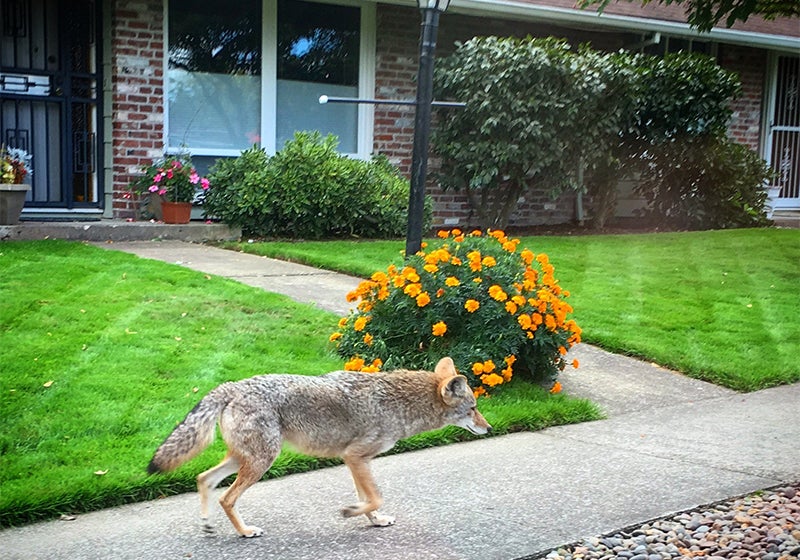Coyotes becoming problem for urban areas
Published 6:43 pm Wednesday, March 20, 2024
|
Getting your Trinity Audio player ready...
|
By Carnell McAlpine, Jr.
Tuskegee University Cooperative Extension
I am starting to see something that looks like a dog in my yard. It is too big to be a fox. What do you think it is?
Coyotes have long inhabited rural areas, but they now are a growing problem near cities and towns.
As residential developments spread into former pastures and woodlands, coyote sightings are becoming more common for homeowners, according to Jim Armstrong, a professor in Auburn University’s School of Forestry and Wildlife Sciences and an Alabama Cooperative Extension System specialist. This is especially true in late summer and fall, when parent coyotes force last year’s litter away from the pack to establish their own range.
“Coyotes usually have four to six puppies,” he said. “Both parents will hunt prey to feed their young, and the group stays together until the next breeding season in the fall. Then the parents run their pups away. Most coyote sightings occur this time of year.”
Armstrong says there are ways to keep coyotes away from homes and yards.
“Most people are concerned about their personal safety and the safety of pets,” he said. “Coyotes are not a major threat to humans, and there have been very few incidents. However, coyotes, which typically weigh 25 to 35 pounds, will eat cats and small dogs and they can destroy a garden.”
In his studies, Armstrong has found coyotes cause the most damage for fruit and vegetable growers. He said the common belief is that coyotes are only carnivorous – eating small animals and occasionally larger ones such as a small deer—but they like some fruits and vegetables as well, especially watermelons.
“Habitat modification is the first line of defense against coyotes,” he said. “The more you keep them wild, the more you can discourage them.”
Armstrong’s suggestions for keeping coyotes away include:
- Do not leave open bowls of cat food or dog food outside. Coyotes, like all wild animals, find a food source they will return for more. If you feed your pets outside, you need to clean up what they don’t eat.
- Do not put food scraps in an unsecured, outside garbage can until just before it is to be hauled away.
- Homeowners with a garden should put up an electric fence before the crop comes up. If you wait until the plants start to grow, the coyote has already learned there is food available and will keep trying and eventually go under or over the fence. It is easier to keep them from starting a bad habit than it is to change it.
- If you see a coyote in the distance, make a loud noise to scare it away.
- Lethal control is often needed on coyotes already coming into a yard. In urban or suburban areas, you need to get an animal control specialist to help get rid of them. You can shoot a coyote if you are in an area where it is legal to discharge a firearm. Proper safety measures should always be practiced.
- Some large dog breeds, such as the Great Pyrenees, have been trained for predator control, and they may work quite well for protecting livestock; however, in residential areas, they may not be practical. Similarly, burros are sometimes used in rural settings to keep coyotes out of pastures. A burro will kick and trample a coyote, but a burro will also kill a dog if it gets too close.
- Do not use poison. In Alabama, there are no poisons legally registered for coyotes, because the poisons would not be safe and they might kill non-target animals as
If you need additional information please contact the Lowndes County Extension Office at 334-348-2315.






